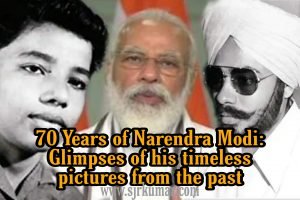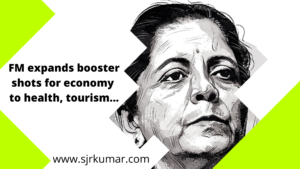Introduction
Supreme Court Article 142 India: In a move that has both electrified and alarmed the nation, the Supreme Court of India took an unprecedented step by converting pending bills from the Tamil Nadu Assembly into enforceable law using Article 142. This dramatic intervention not only marks a significant moment in India’s judicial history but also ignites a vigorous debate about constitutional propriety, the separation of powers, and the future of Indian democracy. Was this a brave stand for justice or a risky venture that may erode the foundational principles of governance? Let’s dive deep.
Understanding the Supreme Court’s Unprecedented Move
The Background – Tamil Nadu Assembly’s Pending Bills
Tamil Nadu’s legislative assembly, reflective of the people’s will, passed several bills that awaited the Governor’s assent. However, a protracted and unexplained delay led to a governance impasse. In India’s federal structure, the Governor plays a critical role by either assenting to, withholding assent from, or reserving bills for the President’s consideration. When this vital process is obstructed, the very function of a democratically elected legislature comes under threat. This paralysis prompted intervention by the judiciary—a decision that shocked many observers.
The Invocation of Article 142 Explained
Article 142 of the Constitution is often described as the judiciary’s “magic wand.” It empowers the Supreme Court to pass decrees to ensure “complete justice” in any pending matter. Historically, this provision has been a tool for extraordinary relief in exceptional cases, often when the letter of the law was insufficient to deliver substantive justice. However, by converting bills into law—a function traditionally reserved for the legislature and executive—the court took a bold and unprecedented leap.
Historical Perspective of Article 142

Landmark Cases Shaped by Article 142
Over the years, Article 142 has been instrumental in delivering path-breaking judgments that shaped India’s legal and social landscape.
Bhopal Gas Tragedy Compensation
Following the catastrophic Bhopal gas disaster, Article 142 was invoked to ensure swift and just compensation for the victims, despite the complexities and inadequacies of existing laws.
Vishakha Guidelines for Workplace Safety
In the absence of a specific law against sexual harassment at workplaces, the Supreme Court laid down the Vishakha guidelines using Article 142, fundamentally altering the discourse around women’s safety in India.
Environmental Protection around the Taj Mahal
Facing apathy from executive authorities, the Court employed Article 142 to enforce environmental regulations to protect the Taj Mahal from industrial pollution, showcasing its commitment to public interest.
Separation of Powers Under the Indian Constitution
The Roles of Legislature, Executive, and Judiciary
India’s democratic architecture is built on a well-calibrated separation of powers. The legislature makes laws, the executive implements them, and the judiciary interprets them. This separation ensures accountability, prevents abuse of power, and upholds democratic governance.
Importance of the Governor’s Assent
The Governor acts as a crucial checkpoint in the legislative process, providing an opportunity for constitutional scrutiny before a bill becomes law. This role isn’t merely ceremonial; it embodies the spirit of federal oversight and constitutional propriety. By stepping over this constitutional procedure, the Court’s action raises alarms about potential distortions in the delicate balance of governance.
Supreme Court’s Intervention: A Necessary Step or Judicial Overreach?
Arguments in Favor of the Supreme Court’s Action
Supporters argue that the Supreme Court’s move was not only justified but essential to preserve democratic functionality in Tamil Nadu. When the Governor, an appointee of the Union government, withholds assent indefinitely without clear reasons, it paralyzes the legislative will of the people. In such a scenario, the Supreme Court stepping in is seen as a corrective measure rather than an overreach. Proponents stress that the judiciary must act when democratic processes are held hostage by political considerations.
Moreover, they cite Article 142’s intended purpose—doing “complete justice.” According to them, this situation perfectly fits that mandate: upholding the will of a democratically elected assembly and preventing the erosion of governance due to executive inaction. They argue that if the judiciary had remained passive, it would have effectively condoned a breakdown in the constitutional machinery at the state level.
Critics’ Concerns About Undermining Democracy
However, critics view the intervention with alarm. They argue that while the court’s intentions might have been noble, the means used risk damaging the very foundation of India’s democracy: the separation of powers. They fear that by bypassing the Governor, the judiciary has entered the legislative arena, setting a precedent that could erode constitutional checks and balances in future disputes.
Furthermore, critics worry about the absence of procedural safeguards that typically accompany legislation. When bills become law through normal legislative-executive processes, there are multiple opportunities for scrutiny and revision. Court-driven laws may lack this robustness, raising serious governance concerns.
In essence, critics pose a crucial question: even in the pursuit of justice, should constitutional boundaries be bent or ignored?
Supreme Court Article 142 India: The Practical Challenges of Court-Made Laws
Notification and Enforcement Without Governor’s Signature
Once a bill becomes law, it must be notified in the official gazette to attain enforceability. Normally, this is a procedural formality performed by the executive branch after the Governor’s assent. Without the Governor’s signature, the situation becomes murky. Who takes the responsibility for notification? If the executive refuses to notify these laws, it could lead to an administrative stalemate.
This opens up the possibility of contempt of court proceedings against high constitutional authorities, a scenario that could plunge the state into an unprecedented constitutional crisis. It is also unclear whether such court-made laws would be immune to future legal challenges questioning their validity on procedural grounds.
Executive Compliance and the Risk of Constitutional Deadlock
If the executive branch (Raj Bhavan in Tamil Nadu) refuses to act on the Court’s decree, the state could witness a constitutional face-off between two pillars of democracy—the judiciary and the executive. Such a standoff would not only cause administrative paralysis but also severely test the resilience of India’s constitutional framework.
In the absence of a clearly defined roadmap for implementation, the enforceability of these laws could be called into question, creating confusion among government departments, citizens, and businesses affected by these legislations. Moreover, it could set a dangerous precedent where future judicial interventions may lack effective execution.
Broader Implications for Indian Federalism
Will This Decision Set a Precedent for Other States?
One immediate concern is the precedent this decision sets. Other states could potentially cite this ruling to push their legislations through judicial routes if confronted with gubernatorial inaction. This could weaken the federal structure by bypassing established norms and procedures meant to maintain the delicate equilibrium between the Union and the states.
If courts become regular arbiters in legislative-executive disputes, the judiciary might find itself dragged deeper into political controversies, risking its perceived neutrality and independence. Over time, this could alter the nature of federal negotiations and weaken the constitutional authority of Governors.
The Risk of Blurred Lines Between Powers
The blurring of roles between the legislature, executive, and judiciary could erode the foundational principles of Indian democracy. Each pillar of governance is designed to function independently yet in coordination with the others. If one pillar begins to subsume the functions of another—even with good intentions—the resulting imbalance could be detrimental to the democratic project.
In the long run, frequent judicial interventions in legislative processes could lead to an erosion of democratic norms, making such extraordinary interventions the norm rather than the exception.
The Future of Article 142: Expanding or Limiting Judicial Power?
Potential Reforms and Safeguards
Given the far-reaching implications of the current use of Article 142, there is a growing call among legal scholars for reforms to better define its scope and limits. One proposed reform is the introduction of guidelines or legislative clarifications that specify when and how Article 142 can be invoked. This could help maintain judicial integrity while ensuring that extraordinary powers are not misused or overextended.
Another suggestion is the establishment of a judicial review mechanism for actions taken under Article 142, possibly requiring a larger bench or parliamentary oversight in exceptional cases. This would ensure that while justice is pursued, constitutional sanctity is preserved.
Striking a Balance Between Justice and Constitutional Integrity
Ultimately, the challenge lies in striking a balance between achieving justice and respecting constitutional norms. While Article 142 is an essential tool for delivering justice where the letter of the law falls short, its use must be tempered with a deep respect for the principles of separation of powers and democratic accountability.
Expanding judicial powers without clear boundaries risks creating a “judicial supremacy” that could overshadow other branches of government. As India continues to mature as a democracy, safeguarding against this eventuality will be crucial.
Comparative Perspective: Judicial Interventions Globally
U.S. Supreme Court’s Interpretative Interventions
In the United States, the Supreme Court has, at times, delivered landmark rulings that effectively created new norms or significantly altered existing laws. Think of Brown v. Board of Education ending racial segregation, or Roe v. Wade creating abortion rights. Yet, the U.S. judiciary traditionally avoids direct law-making, adhering closely to the doctrine of separation of powers. Even the most transformative judgments have remained within a framework that respects Congressional authority, often inviting legislative action rather than supplanting it.
This contrast is instructive for India. While bold interventions are sometimes necessary, courts usually refrain from replacing legislative processes. India’s judiciary will need to tread carefully to avoid perceptions of activism that could compromise its role as an impartial arbiter.
Judicial Balancing Acts in Other Democracies
Globally, other democracies exhibit similar restraint. In the United Kingdom, parliamentary sovereignty curtails the judiciary’s power to legislate. In Canada and Australia, courts have occasionally struck down laws but rarely step in to create new ones. Judicial activism is thus more about protection of rights rather than legislative substitution.
The Indian Supreme Court’s bold use of Article 142 represents a deviation from these global patterns, highlighting the uniqueness—and potential risks—of its position in the constitutional landscape.
Legal Scholars and Public Reactions
Support from Justice Activists
Justice activists and progressive legal scholars have largely lauded the Supreme Court’s decision. They see it as an example of the judiciary fulfilling its role as the ultimate guardian of democracy. In their view, when political executives deliberately delay governance for partisan or ideological reasons, the Court must act as a corrective institution to uphold democratic functionality.
Such voices argue that “dead letters” of the law cannot be allowed to defeat the spirit of democracy. If the Governor’s inaction thwarts the will of the people, it is only fitting that the judiciary steps in to restore equilibrium.
Alarm Bells from Constitutional Purists
On the other side, constitutional purists and conservative scholars have raised alarm bells. They argue that intentions, however noble, do not justify unconstitutional methods. The fear is that short-term gains could come at the cost of long-term democratic erosion.
These critics emphasize that while delays are frustrating, the constitutional solution lies in political remedies, not judicial overreach. Impeachment, political negotiation, or legislative amendments should be explored rather than bypassing established constitutional roles.
The core of their concern is simple: a court that makes laws today might become a court that governs tomorrow—a scenario no true democracy can afford.
Conclusion: Navigating the Fine Line Between Justice and Overreach
The Supreme Court’s decision to convert pending Tamil Nadu bills into law using Article 142 is undeniably historic. It marks a powerful affirmation of the judiciary’s commitment to preserving democracy and delivering justice where executive inertia prevails. Yet, it also treads dangerously close to constitutional boundaries that have been carefully drawn to prevent the concentration of power.
This intervention could either be remembered as a necessary course correction during a democratic impasse or a fateful first step towards judicial dominance in the legislative domain. Much depends on how narrowly or expansively future courts interpret their role under Article 142.
For India’s democracy to thrive, all branches of government must exercise restraint, respect each other’s spheres, and act within the spirit—and not just the letter—of the Constitution. As this story unfolds, it offers a profound lesson in the perils and promises of judicial activism in a vibrant democracy.
FAQs: Supreme Court Article 142 India
What is Article 142 of the Indian Constitution?
Article 142 empowers the Supreme Court to pass any decree necessary to ensure “complete justice” in a matter before it. It has been historically used for exceptional interventions where existing laws are insufficient to resolve pressing issues.
Why was the Supreme Court’s move controversial?
The controversy arises because the Court converted pending bills into law, bypassing the Governor’s constitutional role in granting assent—a move seen by many as judicial overreach into legislative functions.
Can the Governor refuse assent indefinitely?
While the Constitution does not explicitly define a time limit for gubernatorial assent, constitutional conventions suggest that undue delay violates the spirit of democratic governance. Remedies for such delays traditionally lie in political or parliamentary action, not judicial intervention.
How will the Supreme Court ensure the new laws are enforced?
The Court may direct the executive branch to notify and implement the laws. However, if the executive resists, it could lead to a constitutional standoff or contempt proceedings, an uncharted and risky territory.
What could be the long-term consequences for Indian democracy?
If not carefully managed, this intervention could set a precedent for judicial overreach, weaken the separation of powers, and blur the distinct roles of the legislature, executive, and judiciary, ultimately affecting the robustness of Indian democracy.
For further reading on the topic of Article 142 of the Indian Constitution, you can explore the following resources:
Complete justice’ under Article 142 of the Constitution
Article 142 of the Constitution of India
Please don’t forget to leave a review.




